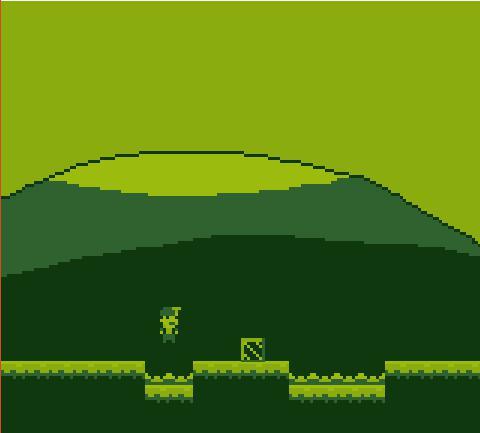Game Boy Coding Adventure: Unlock Retro Game Dev Secrets

For millions, the unmistakable startup chime of the Nintendo Game Boy is a core memory, a sound that instantly transports them back to a world of 8-bit sprites and countless hours of fun. While many are content to revisit these classics, a growing community of hobbyists, tinkerers, and aspiring developers dreams of creating their own experiences for the iconic handheld. A new book, "Game Boy Coding Adventure," aims to turn that dream into a reality, offering a comprehensive guide to programming for the legendary grey brick.
This isn't a guide for modern, high-level game engines. Instead, "Game Boy Coding Adventure" takes you on a journey to the very heart of the machine. It’s a hands-on manual dedicated to teaching the fundamentals of coding for the console in its native tongue: Assembly language. This approach provides a unique and powerful understanding of how classic games were truly made, forcing a deep appreciation for the ingenuity required to work within the system's famous limitations.
What to Expect From Your Coding Adventure
"Game Boy Coding Adventure" is designed as a practical, step-by-step guide that demystifies the console's inner workings. The book promises to take readers from the initial setup of a development environment to the completion of their very own playable game. It serves as a complete curriculum for anyone serious about learning the "bare metal" of retro game development.
The core focus is on providing a foundational education in the Game Boy’s architecture. Readers will learn not just what to type, but why it works. The learning path is structured to build skills progressively, covering the essential pillars of game creation on the platform.
Key concepts covered in the book include:
- Understanding the Hardware: Delving into the specifics of the Game Boy's custom Z80-like CPU, its unique Picture Processing Unit (PPU), and its memory map.
- Mastering Assembly: Learning the instructions, syntax, and logic needed to directly command the console's processor.
- Graphics and Sprites: Discovering how to load tiles, create backgrounds, and manipulate sprites to bring characters and worlds to life on the monochrome screen.
- Input and Control: Learning how to read inputs from the D-pad and A/B buttons to make your games interactive.
- Sound and Music: Exploring the fundamentals of the Game Boy's audio hardware to create simple sound effects and chiptune music.
By the final chapter, readers will have synthesized these skills to build a complete project, providing a tangible and rewarding conclusion to their educational journey.
Who is This Book For?
This guide is crafted for a specific type of creator—one who isn't just looking to make a game, but to understand how the magic of a classic console truly works. While modern tools like GB Studio have made Game Boy development more accessible than ever, "Game Boy Coding Adventure" appeals to those who want to pull back the curtain and work directly with the hardware's logic.
This book is an ideal resource for:
- Hobbyist Developers: Programmers looking for a fun and challenging new project outside of their daily work.
- Retro Gaming Enthusiasts: Fans who want to deepen their appreciation for their favorite classic titles by understanding how they were built.
- Computer Science Students: Learners who want a practical application for low-level programming concepts in a fun and motivating context.
- Experienced Game Developers: Professionals curious about the constraints and techniques that defined a foundational era of video game history.
While the book is designed to be a complete guide, some prior experience with general programming concepts will undoubtedly be beneficial. Diving directly into Assembly language is a challenging but immensely rewarding endeavor.
Why Learn Game Boy Assembly Today?
In an age of hyper-realistic graphics and complex game engines, learning to code for a 30-year-old handheld might seem like a purely nostalgic pursuit. However, the skills and lessons learned from mastering the Game Boy's architecture are timeless.
Programming within strict limitations—like the Game Boy's 8 KB of RAM and 160x144 pixel display—forces developers to become incredibly efficient and creative. Every byte of memory and every CPU cycle counts. This mindset of optimization and clever problem-solving is a valuable skill applicable to any area of software development. Furthermore, it provides a fundamental understanding of how computers work at a low level, a perspective that is often abstracted away by modern tools.
For many, the ultimate reward is seeing their own code running on original hardware. The vibrant homebrew community continues to support the Game Boy with new games and tools, ensuring that the skills learned in this book can be used to create experiences that can be loaded onto a flash cart and played on an actual device, completing the circle from player to creator.
Frequently Asked Questions (FAQ)
Q: Do I need a real Game Boy to follow the book?
A: No, a real Game Boy is not required. The book's lessons can be completed using accurate emulators on a modern computer, which also offer powerful debugging tools. However, testing your final creation on original hardware is a uniquely satisfying experience.
Q: What programming language does "Game Boy Coding Adventure" teach?
A: The book is focused exclusively on teaching Assembly language (specifically, the instruction set for the Game Boy's processor), which gives the programmer direct control over the hardware.
Q: Is this book suitable for someone who has never coded before?
A: While the book aims to be a comprehensive guide, jumping straight into Assembly language can be a steep learning curve. Individuals with some prior experience in any programming language will likely find it easier to grasp the core concepts. For absolute beginners, it will be a challenging but foundational introduction to programming.